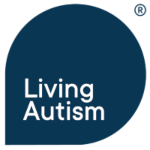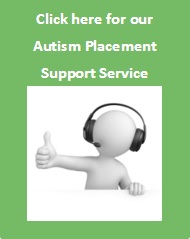Aggression is a clinically significant feature of many children and adolescents with autism spectrum disorders (ASD). Children with ASD frequently have co-occurring (comorbid) psychiatric conditions, with estimates as high as 70 to 84 percent. These co-occurring problems often exacerbate the core symptoms of ASD and can lead to significant functional impairment. Among these problems, physical aggression appears to be especially challenging, and has been associated with serious negative outcomes in both the general population and among individuals with ASD and other developmental disabilities.
Co-occurring Problems Relevant to Aggression
Children with ASD experience a number of related difficulties, including sleep problems, gastrointestinal (GI) problems, sensory abnormalities, and self-injury. Many of these problems have been associated with aggression among typically developing children, and emerging evidence suggests a similar relationship in children with ASD. For example, sleep problems occur in a large percentage of children with ASD, with prevalence rates ranging from 50% to 80%. Sleep problems have been found to be highly associated with aggression in typically developing children. Likewise, research suggests that children with ASD and sleep problems are more likely to demonstrate aggression than those without sleep problems.
Sensory problems, including sensory over-responsivity, sensory under-responsivity, and sensory seeking are also common problems in children with ASD. In typical children, sensory problems have been associated with aggressive and externalizing behavior problems. Similarly, recent studies have been found correlations between sensory problems and broadly defined externalizing problem behaviors in children with ASD. However, research has yet to specifically examine the potential contributing role of sensory problems in predicting physical aggression.
Self-injurious behavior also appears to be relevant to the occurrence of aggression. Individuals with ASD are at an increased risk for demonstrating self-injurious behaviors, as compared to those without ASD, with prevalence rates ranging from 30% to 53%. Although self-injury and other forms of challenging behaviors have been considered to be distinct forms of behavior, they are often related. For example, physical aggression and self-injury have been significantly associated among individuals with severe intellectual impairment and there is evidence that self-injurious behaviors are precursors of later aggression in this population. However, similar studies have not investigated the relationship between self-injury and physical aggression in children with ASD.
Lastly, gastrointestinal (GI) problems may also have relevance to the occurrence of aggression. GI problems are common in children with ASD, with prevalence rates ranging from 24% to 70% or higher, depending on symptom definitions. Although there some evidence of an association between behavior problems and GI problems in ASD, a population-based study of children with ASD did not find significant differences in aggression when comparing children with and without GI problems.
Current Research
Although the nature and developmental course of aggression have been a focus of research with typically developing populations, there have been few large-scale studies of group-level predictors of aggression among individuals with ASD. Consequently, it is unclear whether findings from the general population are applicable to children and adolescents with ASD. In an effort to investigate the extent of the problem in children and adolescents with ASD, a recent large-scale study published in Research in Autism Spectrum Disorders examined the prevalence and correlates of physical aggression in a sample of 1584 children and adolescents with ASD enrolled in the Autism Treatment Network (ATN), a multi-site network of 17 autism centers across the US and Canada. Participants in the study ranged in age from 2 to 17 years, with a mean age of 5.91 years. The term “aggression” referred specifically to physical aggression and included biting, hitting, or other physical aggression directed towards others. A number of diagnostic, medical, and behavioral measures were collected at enrollment and at regular follow-up intervals. Measures of interest included: (a) aggression, (b) sleep disturbance, (c) sensory problems, (d) communication and social functioning, (e) self-injury and gastrointestinal problems, (f) cognitive functioning, and (g) verbal/nonverbal status. Data analyses were completed in order to identify the variables most strongly associated with aggression.
Prevalence, Correlates and Predictors of Aggression
The results indicated that the prevalence of aggression was 53% across the entire sample of children, with highest prevalence among young children. These results are highly consistent with recently reported prevalence rates (56%) in another large-scale study of children and adolescents with ASD. The results also indicate that age-related decreases in aggression in children with ASD are similar to what has been observed in typically developing children. It should be noted, however, that a large percentage (nearly 50%) of the adolescents in the study’s sample continued to demonstrate physical aggression. Thus, the relative decrease in aggression over time must be balanced by the finding that these behaviors continued to occur at a high rate among a large portion of adolescents with ASD.
In terms of predictors, the results indicated that self-injury was highly associated with aggression among children with ASD. This is consistent with the findings of other studies showing a strong association between self-injury and other challenging behaviors. The current results add to existing literature, and suggest that children with ASD who demonstrate self-injury may be at risk for more severe behavioral problems.
Sleep problems emerged as a second significant predictor aggression. This association between sleep problems and aggression is largely consistent with previous findings among both typically developing children and those with ASD, indicating may underlie (and exacerbate) aggressive behavior patterns for many children with ASD. It should also be noted that sleep problems have been found to be associated with self-injurious behaviors among individuals with intellectual disabilities and that these two conditions may be related. In fact, there is some developing evidence suggesting shared neurobiological basis for both sleep disturbance and self-injurious behavior.
Sensory problems were also significantly associated with aggression. These findings are consistent with similar associations between sensory issues and aggression among typically developing children. While previous research has demonstrated an association between sensory problems and broadly defined behavior problems, the current results extend these previous findings by demonstrating a specific relationship between sensory problems and physical aggression.
Comparisons also indicated that children with aggression were more likely to experience GI problems, communication skill difficulties, and social skills difficulties. However, these variables did not appear as significant predictors of aggression, indicating that self-injury, sleep problems, and sensory issues accounted for the majority of the variance in predicting aggression.
In terms of potential sex differences, the results indicate that girls and boys with ASD were equally likely to engage in aggression. This finding was unexpected in that research has consistently shown a significant gender difference among children without ASD, with boys being much more likely to engage in physical aggression than girls. The results of the study suggest that the sex differential in aggression may not be salient in the ASD population.
Implications
This study provides evidence that aggression may be much more prevalent among children with ASD than in the general population and that some co-occurring problems may place individuals at risk for aggression. Aggression was significantly associated with a number of clinical features, including self-injury, sleep problems, sensory problems, GI problems, and communication and social functioning. However, self-injury, sleep problems, and sensory problems were most strongly associated with aggression. These findings indicate that co-occurring problems specific to the ASD phenotype may play an important role in the occurrence of aggression and that it is important to consider multiple domains of functioning when assessing and treating aggression in children with ASD. For example, increased attention should be given to the identification and treatment of sleep problems, self-injury, and sensory problems. Given the significant relationship between sleep problems and aggression, it is possible that treatments targeting sleep problems may help reduce maladaptive behavior. Thus, assessment and treatment of sleeping problems might be included as a standard and integrated part of the assessment and treatment of ASD. Programs for children with ASD should also integrate an appropriately structured physical and sensory milieu in order to accommodate any unique sensory processing challenges. Although assessment tools are limited, comorbid problems should be assessed whenever significant behavioral issues (e.g., inattention, mood instability, anxiety, sleep disturbance, aggression) become evident or when major changes in behavior are reported. Coexisting disorders should also be carefully investigated when severe or worsening symptoms are present that are not responding to traditional methods of intervention.
Of course, more research is needed in order to better understand the characteristics and course of different types of aggression. For example, future research should examine the longitudinal course of aggression, the role of these associated problems in predicting improvement or worsening of aggression, and possible changes in aggression in response to treatment for these co-occurring problems. Studies are also needed to examine the role of additional family- and community-level variables in the prediction and maintenance of aggression among children with ASD.
Mazurek, M. O., Kanne, S. M., & Wodka, E. L. (2013). Physical aggression in children and adolescents with autism spectrum disorders. Research in Autism Spectrum Disorders 7, 455–465.
Lee A. Wilkinson, PhD, CCBT, NCSP is author of the award-winning book, A Best Practice Guide to Assessment and Intervention for Autism and Asperger Syndrome in Schools, published by Jessica Kingsley Publishers.
http://bestpracticeautism.blogspot.co.uk




